The Biodiversity Research and Teaching Collections’ curatorial and scientific staff conduct basic research in the fields of systematic biology, biodiversity science, and conservation. While curators, students, and staff in each division have specific research foci (see research pages), many projects bring together personnel from different divisions as collaborators. Graduate students affiliated with the BRTC are an integral part of our future, and conduct their own research as well as assist with general museum tasks. Undergraduate interns and volunteers from the University also contribute to collection maintenance and research. Our Google Scholar profile tracks the use of our specimens and their data in publications by affiliates and others.

Evolution of the sophisticated clingfish adhesive disc: Dr. Conway, Faculty Curator of Fishes, is investigating the anatomy and phylogenetic relationships of the Gobiesocidae (clingfishes) as part of an ongoing NSF funded collaborative project with Dr. Adam Summers (Uni. Washington, Friday Harbor Labs). Clingfishes have the ability to stick to even heavily fouled and high structured substrates within marine and freshwater environments using a sophisticated adhesive disc that is formed by elements of the paired-fin girdles. Summers and Conway are investigating the diversity of form and function of this disc across the clingfish tree of life. This has provided funding for field work throughout the Caribbean and Australasia, which has resulted in the discovery of several new species. Specimens collected have been deposited at the BRTC.
Recent publications resulting from this work include:
Conway, K.W., C.D. King, A. P. Summers, D. Kim, P.A. Hastings, G.I. Moore, S.P. Iglésias, M.V. Erdmann, C.C. Baldwin, G. Short, K. Fujiwara, T. Trnski, G. Voelker & L. Rüber. 2020. Molecular phylogenetics of the clingfishes (Teleostei: Gobiesocidae) – implications for classification. Copeia 108:886-906.
Conway, K.W., A.L. Stewart & A.P. Summers. (2018). A new species of sea urchin associated clingfish of the genus Dellichthys (Teleostei: Gobiesocidae). ZooKeys, 740: 77–95.
Conway, K.W., A. Stewart & C.D. King. (2017). A new species of the clingfish genus Trachelochismus (Teleostei: Gobiesocidae) from bays and estuaries of New Zealand. ZOOTAXA, 4319: 531–549.
Conway, K.W., D.M. Kim, L. Rüber, H. Espinosa-Perez & P.A. Hastings. (2017). Molecular phylogenetics of the New World clingfish genus Gobiesox (Teleostei: Gobiesocidae) and the origin of a freshwater clade. Molecular Phylogenetics and Evolution, 112: 138–147.
Conway, K.W., G.I. Moore & A.P. Summers. (2017). A new genus and species of clingfish (Teleostei: Gobiesocidae) from Western Australia. Copeia, 105: 28–140.
Conway, K.W., N.G. Bertrand, Z. Browning, T. Lancon & F.J. Club Jr. (2015). Heterodonty in the New World: an SEM investigation of oral jaw dentition in the clingfishes of the subfamily Gobiesocinae (Teleostei: Gobiesocidae). Copeia, 2015: 973-998.
Conway, K.W., C.C. Baldwin & M.D. White. (2014). Cryptic diversity and venom glands in the western Atlantic clingfishes of the genus Acyrtus (Teleostei: Gobiesocidae). PLoS ONE, 9: e97664.

Avian Malaria: Voelker’s lab is investigating the distribution and prevalence of avian malaria across Africa (D.R. Congo, Benin, Malawi and South Africa) and Europe. In support of this endeavor, Voelker and Prestridge visited Italy with Italian colleagues, taking blood samples from nearly 800 birds. The first paper stemming from this collaboration was published in 2015. A paper giving an overview of what we know about avian malaria in Africa has now been published, as has a paper on detection and lineage discovery in different source materials collect in Benin. Two additional papers are in review.
Recent publications resulting from this work include:
Clark, N.J., S.V. Drovetski, & G. Voelker. 2020. Robust geographical determinants of infection prevalence and a contrasting latitudinal diversity gradient for haemosporidian parasites in Western Palearctic birds. Molecular Ecology 29:3131-3143.
Harvey, J.A., and G. Voelker. 2017. Avian Haemosporidian detection across source materials: prevalence and genetic diversity. Parasitology Research 116:3361-3371.
RANGES: Building Capacity to Extend Mammal Specimens from Western North America: Dr. Light is part of a National Science Foundation funded Thematic Collections Network initiative across over 20 natural history collections. For this project, each collection is digitizing important trait and ecological data from western North American mammal specimens. We started documenting these data during the summer of 2023, with PhD student Ayomiposi Abraham and technician Emily Coyote. During 2024, Emily continued her efforts digitizing specimen data and training and working with a number of undergraduate students on the project including Katelyn Bartlett, Holden Carey, Emilia Myslak, Priscilla Solis, and Reese Williford.

